IR Interview: A deeper dive with the Nikon Z7 engineers
posted Tuesday, August 28, 2018 at 4:23 PM EDT

(See important update from 8/30/18 below, about low-light AF performance)
I had a chance to interview a panel of three Nikon engineers at the recent rollout event for the Nikon Z7 in Tokyo, and ask them some of the questions we had about the new camera and its technology.
Normally, we publish these interviews as transcripts, but the amount of back and forth on the questions this time meant it made more sense to simply summarize the answers. The three gentlemen spoke through a professional interpreter, but Keiji Oishi, General Manager of Business Planning for Nikon Inc, also helped with translation of some of the more technical aspects.
My three interview subjects, viewed from left to right in the photo below, were Kideki Sasao, Chief Staff, Product Planning Section DCIL, UX Planning Department, Marketing Sector, Imaging Business Unit; Koji Ozaki, 1st Designing Section, 1st Designing Department, Development Sector, Imaging Business Unit; and Motohisa Mouri, Section Manager, 1st Optical Designing Section, 3rd Designing Department, Optical Engineering Division. Sasao-san and Ozaki-san were involved in product planning for the Z7, while Mouri-san was involved in developing the new S-series lenses.
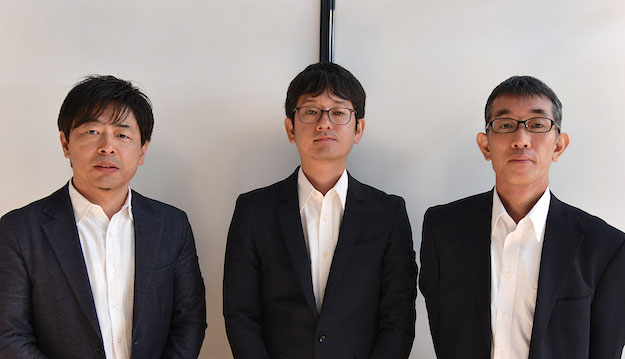
Sasao-san is the product manager for the Z-series. Ozaki-san is in charge of the design side of product management for the Z-series, although he works in a different department than Sasao-san. He's part of the management of the Z-series, though, as a sub-manager. Mouri-san is in charge of managing optical design for ILCs, so the design of the S-series lenses fell under his management. Overall, they were top-level engineering managment for the development of the Z-series and the accompanying S-series lenses.
I'll group the questions under category headings below, so you can quickly skim to find the parts you're most interested in.
Nikon Z7 Image Quality vs. D850
This was a natural first question: How does the new sensor in the Z7 compare with the already-excellent one in the D850?
The answer was that the sensor itself has very similar characteristics, in terms of dynamic range, noise levels, etc; it's pretty much on-par with the D850's sensor, so you can expect NEF RAW files to have similar quality.
On the other hand, the Z7's EXPEED 6 processor is another generation ahead, so JPEG quality is noticeably improved. They didn't give a specification for the amount of improvement, but said that it was noticeable. (I haven't closely compared Z7 and D850 images myself, and our current gallery shots were captured with beta firmware, but I can say that I was pretty impressed by the Z7's image quality at very high ISOs. Its high-ISO noise is very fine-grained, even at ISO 25,600. You of course lose a fair bit of subject detail that high, but I felt the images were impressively usable.)
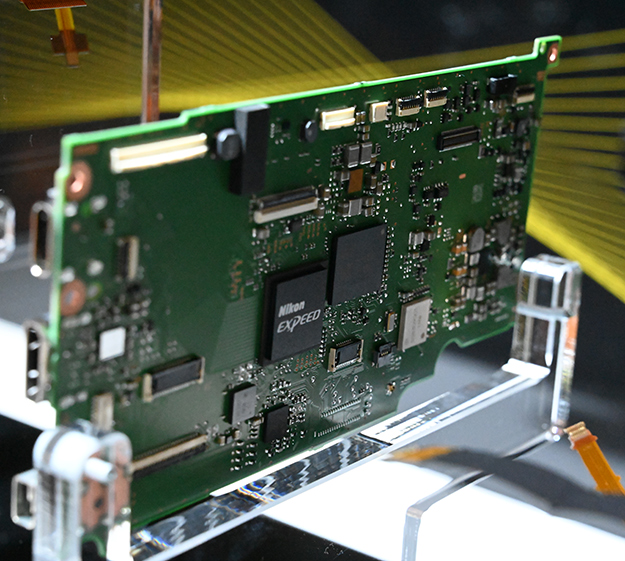
Z-series AF performance with F-mount lenses
This is obviously a huge area of interest for existing Nikon shooters, and is the area in which Nikon potentially leaps ahead of their competitors in terms of lens choice. In our pre-launch briefing, Nikon stated that, on a lens-by-lens basis, F-mount lenses should focus just as quickly and accurately as on a body like the D850. I pointedly asked for confirmation on this point, and they assured me that that indeed should be the case.
One of Nikon's competitors (here to remain nameless) publicly claimed that Nikon (and Canon for that matter) wouldn't be able to make conventional SLR lenses work with their mirrorless bodies, because the AF drive systems on conventional lenses weren't fast enough to work in a mirrorless environment. (We chose not to publish that claim, because, while it's true that lenses need very fast AF-element actuators to work with contrast-detect AF, there should be no problem working with on-sensor phase-detect systems.)
So I asked the Nikon engineers what in fact they did to enable F-mount lenses to work on the Z-series bodies, and the unsurprising answer was that the cameras simply refrain from using contrast-detect AF when an F-mount lens is mounted. They just use phase detect AF (PDAF) exclusively with F-mount optics. [Update 9/7/18: Nikon engineers have now reached out to us and let us know that this initial answer was misinterpreted by us. The actual answer is that "both Phase and Contrast-Detect AF are in fact used when attaching an F-mount lens to the Z series cameras via the Mount Adapter FTZ." Stay tuned, as we will further clarify this and pen more in further articles and on the review pages.
Whatever the cause, it does seem that the Z7 loses a significant amount of its low-light AF ability when shooting with lenses slower than f/2. Whether this is a limitation of its PDAF system or an overall limitation of the Z7's hybrid AF system is unclear. (Update, 8/30/18, 1:16pm EDT: Contrary to the preceding and what's been reported by other outlets, this does not seem to be the case. We asked Nikon about low light AF limits, and received this reply: "AF is possible down to -4.3 EV with an f/1.8 lens, -4 EV with an f/2.0 lens and -2 EV with an f/4 lens." Also, there is no reduction in low light AF performance with F-mount lenses, apart from any due to maximum available aperture.)
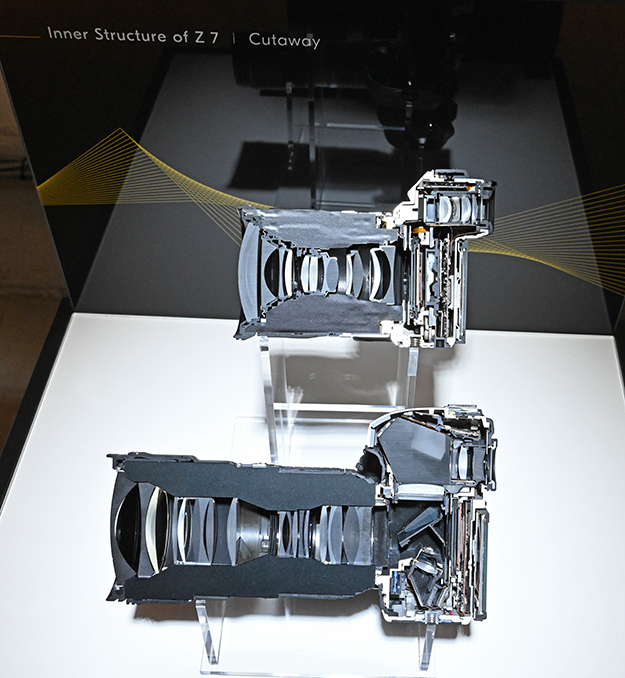
Focus speed with native S-series lenses
While they didn't give any specific numbers, the engineers did say that native S-series lenses should have very high AF performance, in part because the speed communications between the lens and camera body has been greatly increased.
It seems likely that some of the 11 lens/body electrical connections on the Z-series mount just provide compatibility with old-style F-mount lenses, but I'm guessing that one or two are a very high-speed digital bus connection, to handle communications with new Z-mount lenses.
How have AF algorithms changed for mirrorless?
With the Z7, Nikon now has (a) more AF points than ever to work with, and (b) image data fully overlaid with the AF points. I wondered how Nikon's AF algorithms might have changed as a result.
Perhaps unsurprisingly, the answers here were very vague, as inner details of AF algorithms are extremely proprietary. In fairness, though, AF algorithms are extremely complex, with very different behavior depending on the type of subject. (See my interview with Olympus' Ogawa-san, for a description of the different use-cases manufacturers design their AF systems to handle.) So even if it didn't involve proprietary information, this would be a difficult question to answer concisely.
The general reply was that the new system uses a lot more information in making its AF decisions than previously, incorporating not only a much larger number of AF points, but also image data, as noted above. They commented particularly on the sheer volume of information, which it seems the new EXPEED 6 processor mentioned above was critical for handling. Beyond that, further details weren't forthcoming.
They did generally agree, though, that having image information available lets the camera be smarter about deciding what was subject and what was background.
(As a side note, previous Nikon cameras used data from the relatively high-resolution RGB metering sensors along with their long-developed phase-detect AF algorithms to help identify subjects. In the case of the D850, the RGB metering sensor had 180K pixels in it, not that far off from the image sensor resolution in some of the first digital cameras. So the general ability to integrate image and phase-detect data existed previously; the AF engineers just now have much higher-density image data available to work with.)
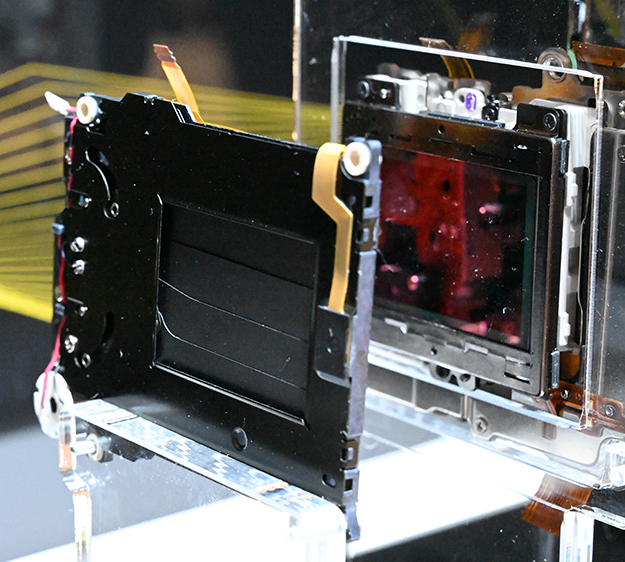
Focus speed: How good overall, for stills and video?
For all the talk about F-mount lenses being able to focus as quickly on Z-series bodies, it wasn't clear what overall AF system performance was like -- so I asked about that.
For now, at least, it seems that the Z-series won't challenge cameras like the D850 and D5 when it comes to sports shooting. While their AF systems should be quite fast, the engineers said that the D850 and D5 would still likely be photographers' first choice for sports photography. As to the future? Who knows, but it's clear that mirrorless technology is still in its early stages, especially for Nikon, so there's likely to be considerable improvement going forward.
On the other hand, video AF performance is drastically better than that of any previous Nikon DSLR body. Being able to grab phase-detect data on the fly, while simultaneously recording video means that Z-series video AF is going to be much better than we've seen in the past from Nikon full-frame bodies.
Just how much better remains to be seen, but initial signs are encouraging. I didn't shoot much video at the launch event that would have shown video AF very well, but another editor had one of us walk towards him for a long front-on tracking shot, and it seemed that the camera tracked flawlessly; something that would be impossible with current Nikon DSLRs in video mode.
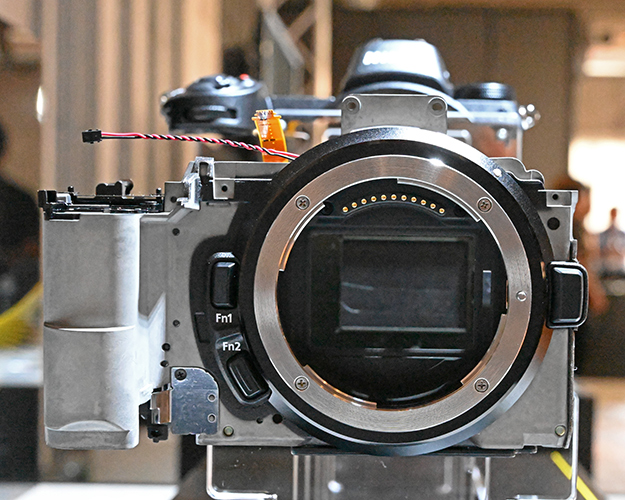
Single-axis vs cross-type AF points
This was a bit of a surprise to me. By their nature, phase-detect AF points are sensitive to detail in one axis only. That is, the focus pixels that make up each AF point will individually be sensitive to either horizontal or vertical subject detail, not both. So-called cross points involve combining two different types of focus pixels into a single point, and it's common in DSLR systems to have a large number of single-axis AF points, with a smaller number of cross-type ones that can detect both horizontal and vertical detail. (In the case of the D850, 99 of its 153 total AF points are cross-type.)
I asked how many of the Z7's AF points were cross-type, and was a little startled to hear that none of them are; they're all single-axis.
When I expressed my surprise at this, the response was that they didn't feel that they needed cross-type points, given the enormous number of points they had to work with, and the fact that the points were still quite sensitive to diagonally-oriented detail.
They seemed to be saying that, with so many points, there would very likely always be at least some detail that wasn't purely horizontally-oriented that the camera could pick up on.
This is an area we'll want to do some testing on, once we get a final production sample in our hands. I had some personal experience in this area with both early and subsequent "beta" samples, but will refrain from any comment on or analysis of it, since in both cases, we were explicitly told that we were dealing with non-final firmware.
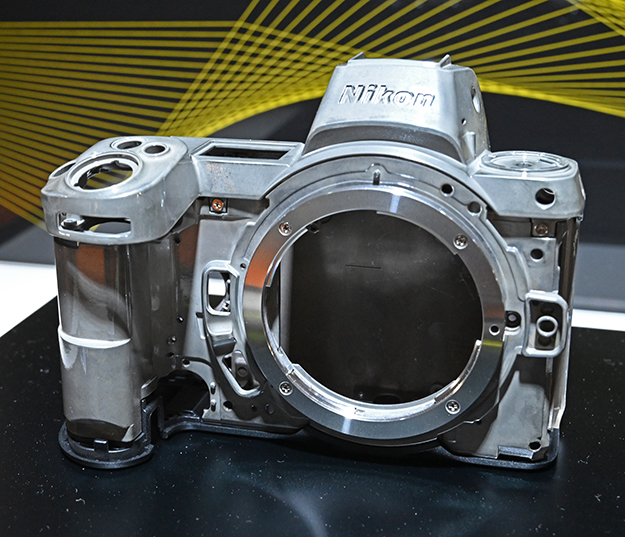
How did they arrive at the Z-mount's dimensions?
It made sense that Nikon designed a completely new mount for their full-frame mirrorless cameras, taking advantage of the new system to break through limitations imposed by their historic lens mount design. But I was curious how they arrived at the particular combination of 55mm inner diameter and 16mm flange focal distance used in the Z-mount. It's by far the shortest flange depth of any camera having a sensor larger than 1"-type, and nearly 2mm shorter than the nearest APS-C body. (The Fujifilm X-mount, at 17.7mm.) Sony's E-mount sits at 18mm, Leica L-mount at 19mm and the Micro Four-Thirds standard is 19.25mm. The only lenses with 35mm image circles with mounts that large have much longer flange depths, and Sony's E-mount is only 46.1mm.
So the Nikon Z-mount is a definite departure from the norm; how did they decide on that particular configuration?
The answer is of course complex, as it involved a number of trade-offs, including maximum aperture capability, minimization of optical aberrations, lens size and cost, etc. The press and public have focused a lot on the coming 58mm f/0.95 "Noct" lens and that aperture as being the driving force behind the flange dimensions.
As it turns out, that was only one of the factors considered, and likely not even the most important.
The biggest consideration by far was what the large diameter and short depth would do for optical quality, in terms of center resolution, corner-to-corner sharpness, reduced shading (vignetting), reduced optical aberrations and improved AF coverage. My impression was that huge-aperture capability was something that largely came along for the ride.
Having larger-diameter elements so much closer to the sensor surface means that light rays can strike the sensor surface more straight-on (telecentric), and that it's much easier to control things like lateral chromatic aberration. (The Z-series of course has firmware-based lens correction built in, but the S-series lenses themselves should show much less chromatic aberration in the RAW files, when compared to similar F-mount ones.)
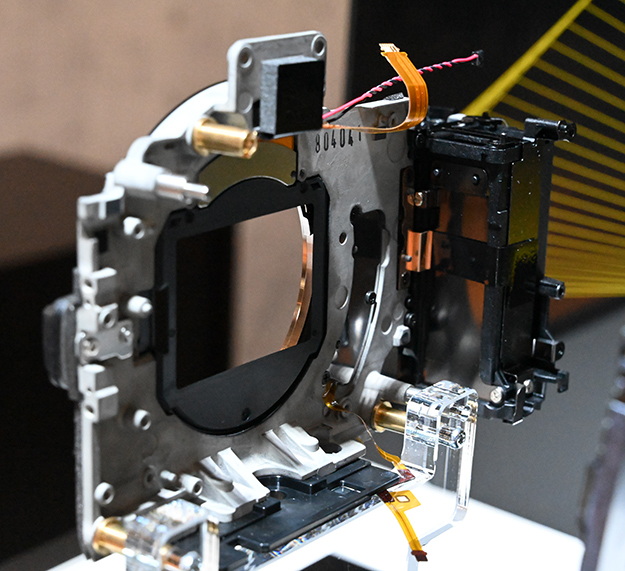
F/0.95 is just the beginning?
Now this was interesting: The amazing f/0.95 aperture of the coming 58mm lens is the starting point for super-aperture lenses, versus an end point! When I mentioned the f/0.95 aperture as a goal for the new mount, Mouri-san said that their goal was actually more ambitious than that, and that the 58/0.95 lens was just a "current point".
Wow -- so how fast can we go? Will we see an f/0.9? An f/0.85 or 0.8?
They of course declined to answer with any specifics, but I found it extremely interesting that we may well see lenses even faster than f/0.95 in the future!
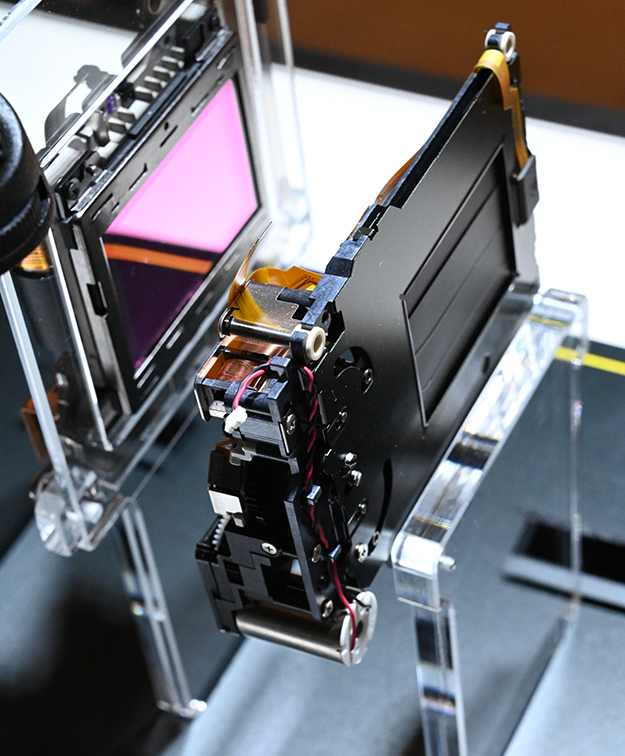
Keep it clean!
The engineers also brought up an interesting point: Because the light rays exiting the rear of the lens will be largely parallel to each other, dust on your sensor is going to cast much more distinct shadows on the sensor surface than is usually the case. We're probably all familiar with what a dirty sensor looks like: At wide apertures, dust specks will cast soft, fuzzy shadows, if you notice them at all. As you stop down, though, incoming light from any point on the subject becomes more and more like a point source, so any dust will cast sharper shadows and so be much more noticeable. The key point in small apertures causing sharper shadows is that the incoming light rays are much more parallel with each other than is the case at larger apertures.
With the S-series lenses, though, because the inbound light rays are more parallel with each other, you'll see sharper dust-shadows, even at larger apertures -- so you'll want to be more careful about keeping your Z-series sensor clean, and be more conscious of checking for dust on it.
Cheaper lenses coming in the future
This wasn't actually part of my interview questions, but eagle-eyed IR editor Eamon Hickey noticed it in a brochure handed out at the launch event in New York City. While the focus (no pun intended) at launch was on the very high optical performance of planned S-series lenses, Nikon has publicly stated that there will be "non-S" lenses at some point in the future.
Nikon's Z-series lens roadmap extends through mid-2020, so these presumably lower-performance but cheaper lenses will only come at some later point. But they will be coming. (Given that this will be 2 1/2 years from now, I wouldn't be surprised if Nikon announces a lower-cost body in that time frame as well -- but Nikon of course makes no statements about future products; even the note that there would be non-S lenses at some point is a little unusual for them.)
What manufacturing advances are involved in the new lenses?
Lens manufacturing has advanced by leaps and bounds over the last five years or so. Larger-diameter molded aspheric elements are now becoming almost commonplace, and automated alignment and assembly systems have enormously decreased decentering problems during manufacture. (This to some extent means we're seeing fewer obviously "tilted" lenses at the retail level than we once did, but it also means that lens designers now have more latitude in their design processes, to create high-performance lens designs that wouldn't have been manufacturable a little while ago.)
I asked what advances in manufacturing technology had allowed certain advances in the design of the S-series lenses, but didn't hear anything along the lines of the above.
They did say that the f/0.95 optic will have an all-new antireflection coating, surpassing even the excellent performance of Nikon's Nano-crystal AR coating. The new coating will be called AR-neo, but specific performance specs aren't available for it at this time.
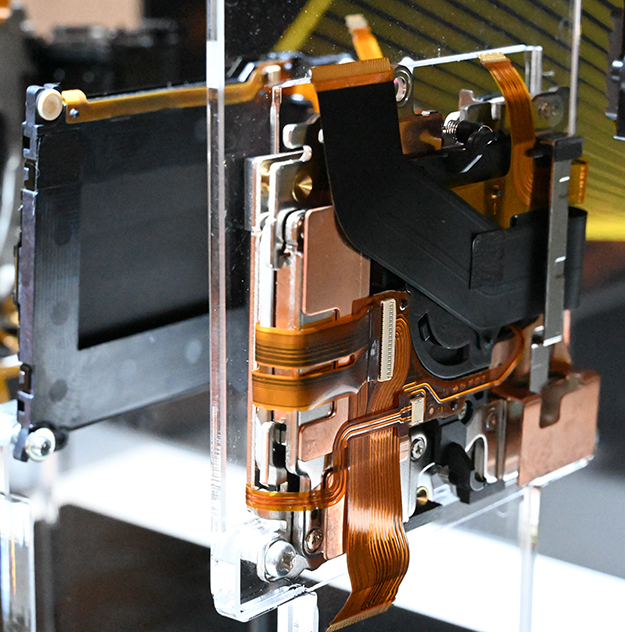
In-body vibration reduction (Image Stabilization)
The inclusion of in-body image stabilization in the Z-series bodies is a significant first for Nikon, and we had a few questions about how it worked with existing lenses. (This section came at the very end of my time with the engineers, so I didn't have as much time to explore the area as much as some of the others here.)
With existing VR lenses, you pick up roll correction in addition to the pitch and yaw correction that the lenses themselves provide. It struck me that this could be very tricky, because the lens' VR is going to be displacing the image on the sensor surface somewhat, relative to where the camera might expect it to be, so it seemed that the camera would have to know how much it had been shifted, in order to properly correct for roll-axis motion (rotation around the long axis of the lens).
Thinking about it, when a 5-axis system is correcting for roll, it isn't just a matter of blindly rotating the sensor about its center, because the camera probably isn't rotating around the center of the sensor, but much more likely, is rotating around some other point, depending on how the user is holding it, how its mass is distributed relative to their hands, etc.
When the camera is handling all the IS itself, it can take into account all the motion corrections itself. But, when a lens is handling the pitch and yaw compensation, that means that the image is shifted on the sensor surface, so it may be displaced relative to the roll-axis rotation of the body, compared to where it would have been otherwise. And it's going to be in motion in the X- and Y-coordinates of the sensor.
So it seemed that the camera must need to know what the lens is doing, how much and in what direction it's shifting the image as a result of its VR efforts, so the camera and take that into account.
This was what I asked the engineers: How does the camera know what the lens VR is doing, so it can compensate accordingly for its own VR adjustments?
As usual, the engineers couldn't be very specific in their answer, but they said that Nikon's VR lenses do communicate back to the body about what they're doing, so the in-camera VR system can take the action of the lenses into account.
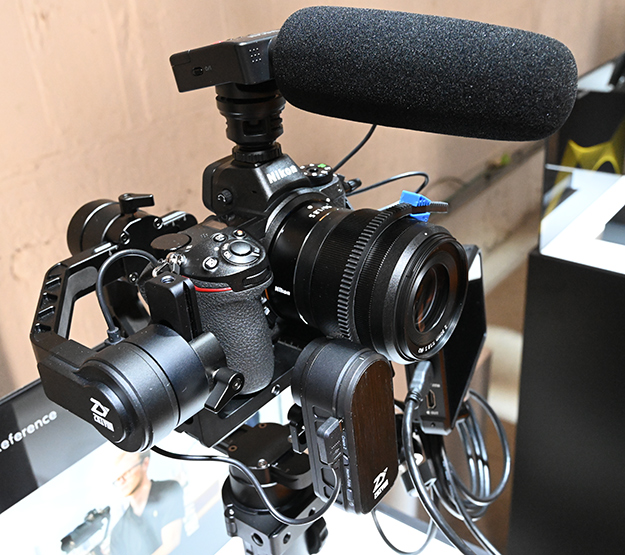
Video recording: Full-pixel readout?
My interview time was rather short, but video is such a huge part of the Z-series feature set that I wanted to squeeze in a few questions about it as well.
One question we had in particular involved how data is read out from the Z7 and Z6 sensors, to form the video image. We were confused by some of the language used to describe the differences in how the Z7 and Z6 read out the image data, and "full-pixel" seemed to be used for both.
Asking about this, I learned that the Z6 will in fact read out all pixels in the 16:9 image area, and use all of them to form the final video image.
The much higher-resolution Z7 won't read out every pixel in full-frame mode (it does however do that in a DX crop mode), so it will be doing some combination of pixel-skipping and downsampling, but the details are proprietary. (Given that there are more than 2x as many sensor pixels horizontally and vertically on the Z7 sensor than even a 4K video frame, it makes sense that there'd be some amount of pixel-skipping. It'll be interesting to look at detailed video image quality for the Z7 at both 4K and FHD, against the Sony A7R III, which has an only slightly lower-resolution sensor in it.)
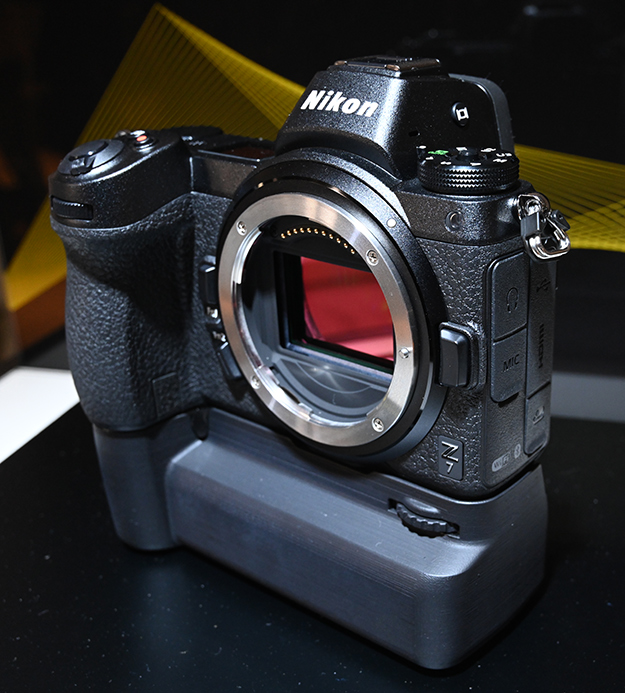
10-bit N-log vs. the competition, and why no internal log recording?
One thing that's significant about the Z-series is their ability to output video with a log tone curve and 10 bits of A/D resolution (it's also 4:2:2 sampling).
Asking Nikon about their decision to incorporate this, they said it was in response to requests from professional videographers, who wanted more tonal resolution, to support more extreme exposure and tonal adjustments in post-processing without seeing quantization effects (stairstep tonal gradations) in their final output. Other manufacturers in the "hybrid ILC" market space currently only offer 8-bit A/D in their log recording formats. The brightness steps between adjacent codes in the A/D are on a logarithmic scale, but the fact is you still only have 256 discrete brightness levels available to you, so if you push things too far in post, you're going to see banding in subtle gradients.
Nikon's 10-bit N-log format provides 4x as many (1024) tonal steps, so you can push your tonal adjustments four times further before you'd see the same level of quantization as with 8-bit log raw material.
Due to the amount of processing involved, though, N-log is only available for recording to an external device, via the HDMI port; internal recording is limited to straight, non-log formats only.
IR editor Jaron Schneider wondered why there wasn't an option for at least 8-bit log internally, and the reply was that Nikon didn't hear that as a significant requirement from the videographers they were working with. I can imagine that 8-bit internal log recording would be very useful to people who don't want to build and carry a full rig around their cameras, but the pro-level users Nikon worked with were pretty much all using external recorders anyway, for the sake of the much higher bitrates that are possible, and that most if not all were using their cameras in some sort of a "rig", so the added bulk of an external recorder wasn't so much of an issue. (Note that some of this is my own extrapolation, so please don't blame any faulty logic on Nikon themselves :-)
• • •
|
Your pre-orders help this site!
Based on our hands-on experience with it, the new Nikon Z system should prove to be a
Ordering through the links below will cost you nothing, but will be a Nikon Z7 Body Only - $3,396.95: Adorama | Amazon | B&H Nikon Z7 + 24-70mm F4 Kit - $3,996.95: Adorama | Amazon | B&H Nikon Z6 Body Only - $1,996.95: Adorama | Amazon | B&H Nikon Z6 + 24-70mm F4 Kit - $2,596.95: Adorama | Amazon | B&H Nikkor Z 35mm F1.8 S Lens - $846.95: Adorama | Amazon | B&H Nikkor Z 50mm F1.8 S Lens - $596.95: Adorama | Amazon | B&H Nikkor Z 24-70mm F4 S Lens - $996.95: Adorama | Amazon | B&H Nikon FTZ Adapter - $249.96: Adorama | Amazon | B&H Thank you! |